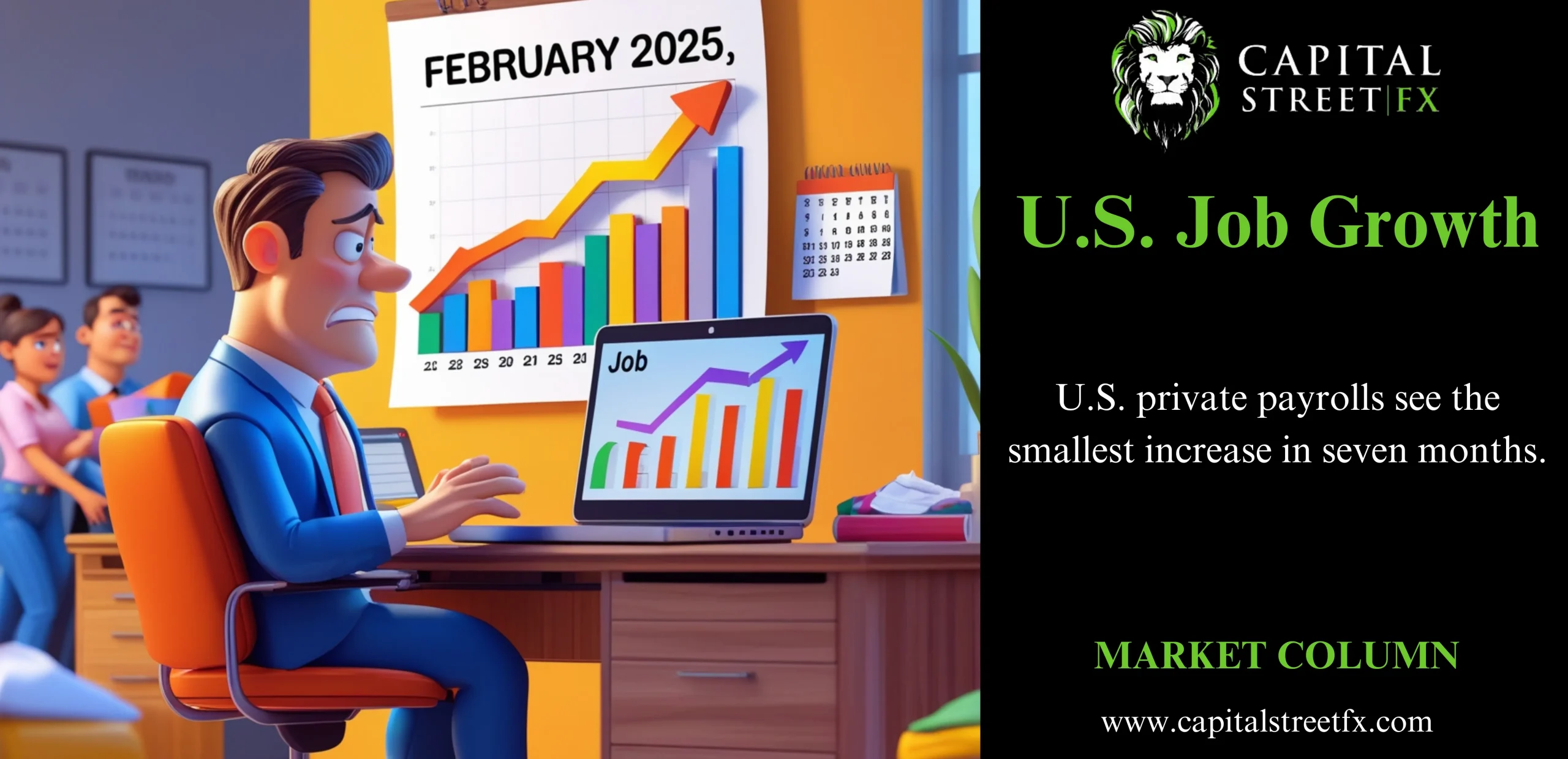U.S. private payrolls see the smallest increase in seven months.
U.S. private payrolls grew at their slowest pace in seven months in February, with policy uncertainty—likely tied to tariffs on imported goods—and weakening consumer spending cited as key factors.
The ADP National Employment Report, released on Wednesday, also indicated a slowdown in wage growth for job switchers, while wage increases for employees staying in their positions remained stable. Although the report may overstate the labor market’s decline, it aligns with consumers’ increasingly negative perceptions of job prospects.
Tariffs, whether already in place or under consideration by the Trump administration, have unsettled businesses and consumers, erasing the post-election sentiment boost that followed the Republican’s victory in November.
“Policy uncertainty and softer consumer spending may have contributed to layoffs or a hiring slowdown last month,” said Nela Richardson, ADP’s chief economist.
“Our data, along with other recent indicators, suggests employers are hesitant to hire as they evaluate the broader economic landscape.”
Private payrolls rose by just 77,000 in February—the smallest increase since July 2024—following an upwardly revised gain of 186,000 in January. Economists surveyed by Reuters had expected a 140,000 rise after the initially reported 183,000 increase the previous month.
Job losses were recorded in the trade and transportation, healthcare, education, and information sectors, while small business employment also declined. However, construction added 26,000 jobs, manufacturing saw an 18,000-job increase, and leisure and hospitality payrolls grew by 41,000 positions.
Wages for job changers rose 6.7% year-over-year in February, slightly down from 6.8% in January. Wage growth for employees staying in their jobs remained steady at 4.7%.
A Reuters survey estimated that private payrolls likely grew by 142,000 jobs in February as the impact of unseasonably cold weather diminished. This follows a gain of 111,000 jobs in January.
Mass layoffs of federal employees—primarily those on probation and within the United States Agency for International Development—are unlikely to be reflected in February’s employment report, as these job cuts occurred outside the payrolls survey period.
However, hiring and funding freezes could still affect government and contractor employment.
Overall, nonfarm payrolls are projected to have increased by 160,000 jobs in February, following a rise of 143,000 in January. The unemployment rate is expected to remain steady at 4.0%.

